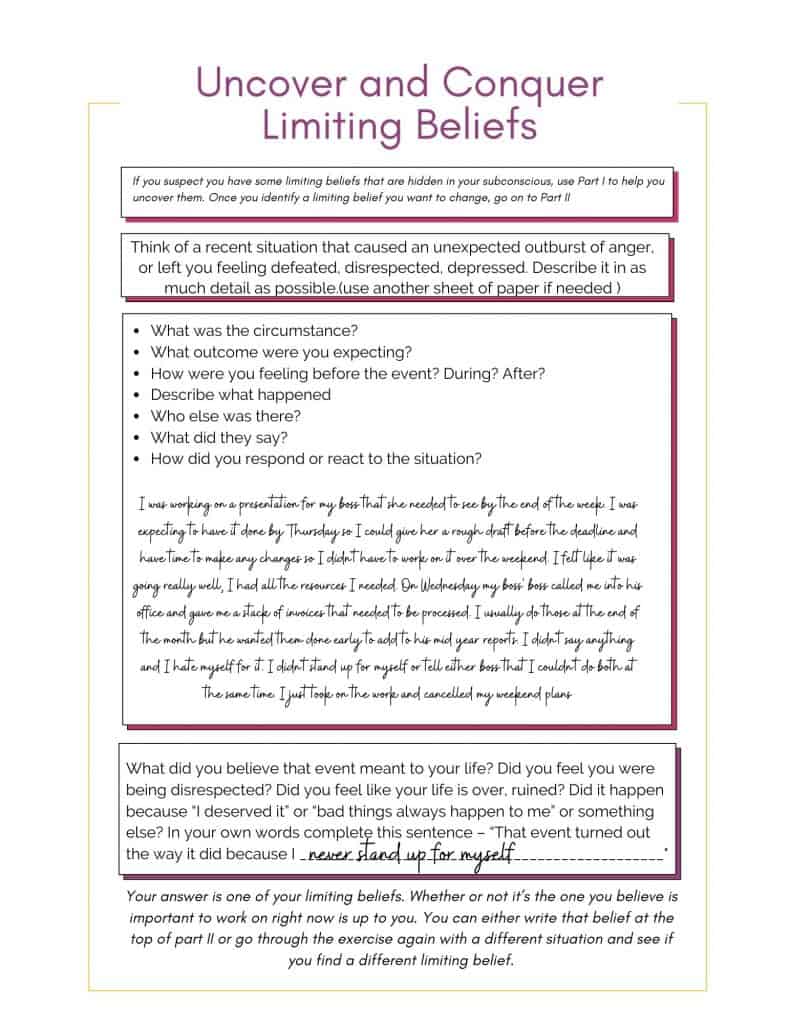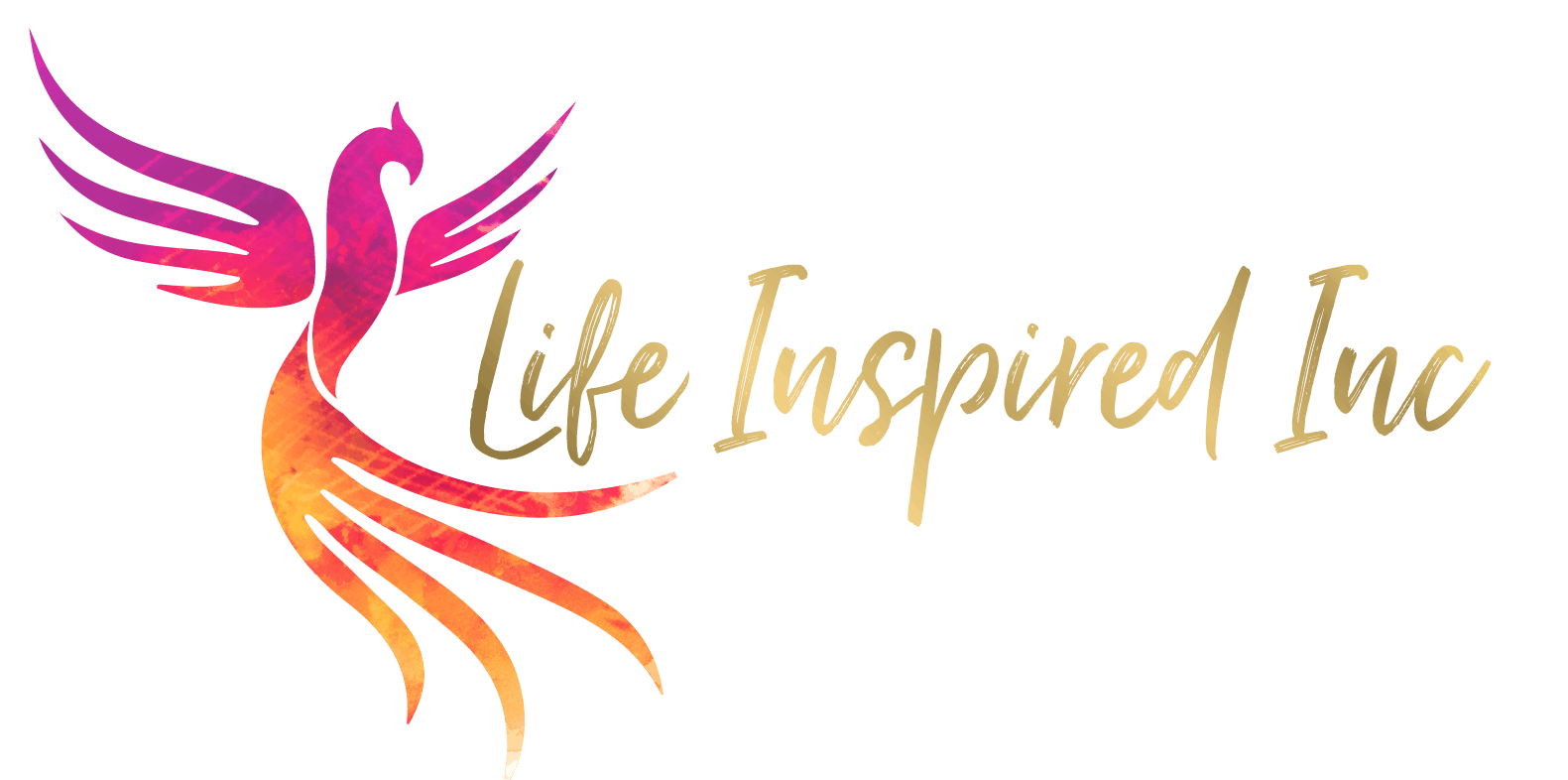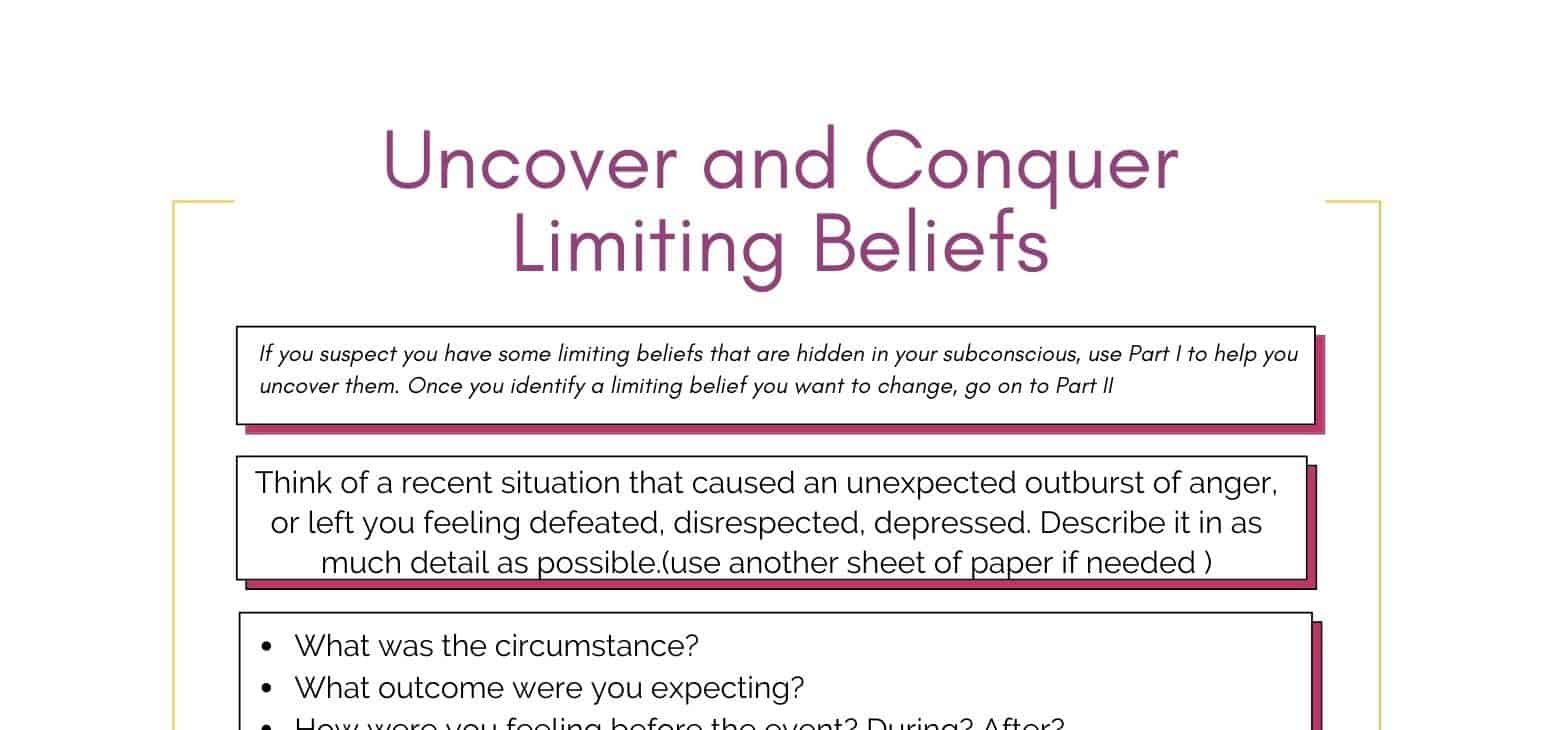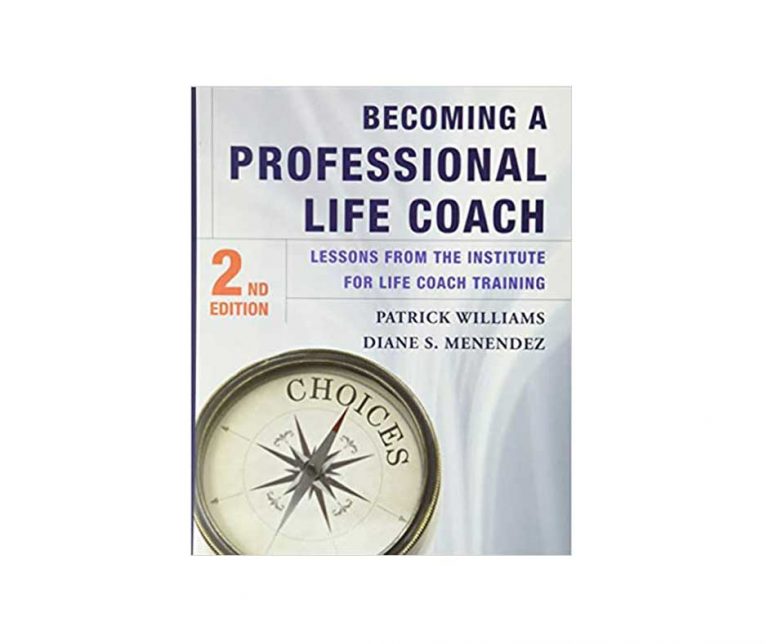Limiting Beliefs; *Free* life coaching exercise
Limiting beliefs are the stories we tell ourselves about our self, other people, the world in general and our place in the world.
- Those stories are like a filter we look through when viewing life events.
- What we think we are seeing determines how we respond.
- How we respond determines the results we get and the life we experience
Helping a client first uncover, then challenge those limiting beliefs will change the results they experience. Get a free copy of the Limiting Beliefs Worksheet here
This article and Limiting Beliefs Exercise will benefit your client in two ways. The first is almost never covered in other limiting beliefs techniques:
1 – Uncover subconscious limiting beliefs. Using the limiting beliefs coaching exercise below you can help your clients unearth those often subconscious stories. Acknowledging and facing those stories is the first step to overcoming self-limiting beliefs.
2 – Overcome them using self awareness. Self-limiting beliefs, those stories we tell ourselves, are not a universal truth about who we are. As children we learned about who we are from the way we were treated, or spoken to, by important people in our lives. Looking at the circumstances that created those beliefs with the logic of an adult can help a client realize their limiting belief could be based on nothing more than a random comment made by a care giver having a bad day!
When to use the limiting beliefs worksheet
Often in a coaching session, you’ll hear words the client isn’t even aware they are using. Things like “I can’t” “I never” “I always fail” Absolute, and negative statements like that are unconscious ways of speaking but they reflect deep inner beliefs we hold about our self.
Instructions for Using Limiting Belief Worksheet
Limiting beliefs aren’t created in a vacuum. They don’t just pop into our minds. Our core beliefs about who we are were formed in childhood before the logical part of our the brain was active. Kids function out of the lower, emotional, limbic brain so all early memories are stored as feelings, not logical thoughts.
That’s why the typical advice of “just remind yourself it’s not true” to overcome limiting beliefs doesn’t work. You can tell yourself to think new thoughts, but your beliefs are hardwired as feelings into the very structure of your subconscious brain, they aren’t just logical thoughts that can be rewritten.
Those emotional beliefs make up your sense of self, of who you are. Letting go of who you are is a pretty big deal.
Worksheet Part I: Uncovering Limiting Beliefs
So how do we help a client uncover emotional beliefs, hiding in the subconscious brain?
We can find the beliefs by evaluating the results they produce. Remember:
- Beliefs are stories about what we “think” is true about ourselves and the world
- Those stories are the filter through which we evaluate what’s happening around us
- We respond to what we think those events mean to our life
- How we respond determines our results
Example of Part I

Coaching Questions: Uncover Limiting Beliefs
You can go over these questions in a coaching session, or give the client a Limiting Beliefs Worksheet to do at home and save your coaching time for processing their answers and finding solutions.
- Can you remember what you were thinking in the moment you were triggered to say the wrong thing, act inappropriately, not speak up for yourself, or to put off doing what needed to be done?
- If you were alone – what did you tell yourself that situation meant to your life?
3. If you were with others, what did you believe the other person was saying or thinking about you?
4. What were you feeling?
5. What seemed most important at the time? –
Defending themselves against a criticism? Proving they are right? Avoiding a confrontation? Notice the verbs here – defending, proving, avoiding… Anytime a client is in a defensive or protective state they are again operating from a limiting belief. Becoming aware of those mental states will help us dig deeper into finding the subconscious beliefs triggering them.
Have the client list any limiting beliefs about their self-worth on the worksheet
Worksheet Part II: Overcome Limiting Beliefs
Once you identify those beliefs and write them down, the next step is to start confronting them. As I said at the beginning, we pick up those beliefs about ourselves in childhood. Often as young as 2 years old we start to learn who we are by how others treat us and the words they use about us.
A child doesn’t have the logical capacity to understand that mommy is just angry at the unpaid bills when she starts yelling at the child to stop being so noisy. All the child hears is “Shut up! Why do you have to make so much noise” Those words get literally recorded in the immature emotional brain as a feeling – I am not good enough to be around people – I am too noisy and I irritate others.
A script is being written that becomes our story about who we are and our place in the world. If the script is reinforced enough it turns into our identity. As an adult, when faced with someone who is angry and frustrated like mom was all those years ago we will have that story/belief triggered – I irritate others and am not good enough – and we will respond to today’s event out of that limiting belief.
When faced with an angry boss or partner, for example, the client may feel the other person’s anger is somehow their fault. Their identity says they are an irritation to others so clearly “ if other people are angry around me, it must be my fault.”
The result can be feeling rejected, defeated, or even like they are responsible for fixing other people’s problems, leading them to be a doormat others take advantage of.
Coaching Questions: Overcome Limiting Beliefs
Have the client complete part II of the worksheet at home if you’ve given it to them as homework. Otherwise as you review the questions verbally, the client can write down as much or as little as they wish.
- What is the limiting belief you want to work on?
2. Think back as far as you can to remember when you first felt that limiting belief.
3. What was the situation?
4. Who was there? What did they say?
5. What was that person’s mood, life circumstances or challenges at that moment?
6. What part of what was said in that moment really wasn’t a true assessment of you and was more of a reflection of the other person’s personal struggles at the time?
7. Can you think of an example when you proved that belief about yourself wasn’t true?
8. In what ways is that limiting belief holding you back?
9. How would your life be different if you didn’t hold on to that belief?
How to Work with the Client after they do the Worksheet
Now that your client (or you!) have identified a limiting belief to work on and filled out or discussed part ll of the worksheet, move on to creating new beliefs.
- Describe a specific situation where that limiting belief may come up in the future.
2. What was your normal response?
3. What is your new more empowering belief?
4. Based on the new belief, describe in detail what your new response will be to that same situation.
5. What are some ways you can think of to help you remember to pause in the moment before reacting and choose your new response?
Creating a Long Term Client Relationship
While it is always up to the client to set the agenda for each coaching call, you as the coach can start the session by asking about their progress with their limiting belief. Help them celebrate even small successes! People are notoriously hard on themselves and tend to discount small victories. Massive results come from tiny, incremental changes that add up over time. Clients typically do not acknowledge or value minor achievements, but without that acknowledgement that they are making progress, they lose momentum and give up. Help them remember and validate each improvement. Building this success momentum will go a long ways to keeping them engaged in the coaching process.
When asking follow up questions about something discussed in a previous session like working on limiting beliefs, remember the coach approach is one of encouragement, not to criticize or hold them accountable for things that weren’t accomplished.
Using a coaching session prep form between calls is another powerful way to keep the client mindful of the coaching process and the steps they are working on.





Thank you so much for making this available!